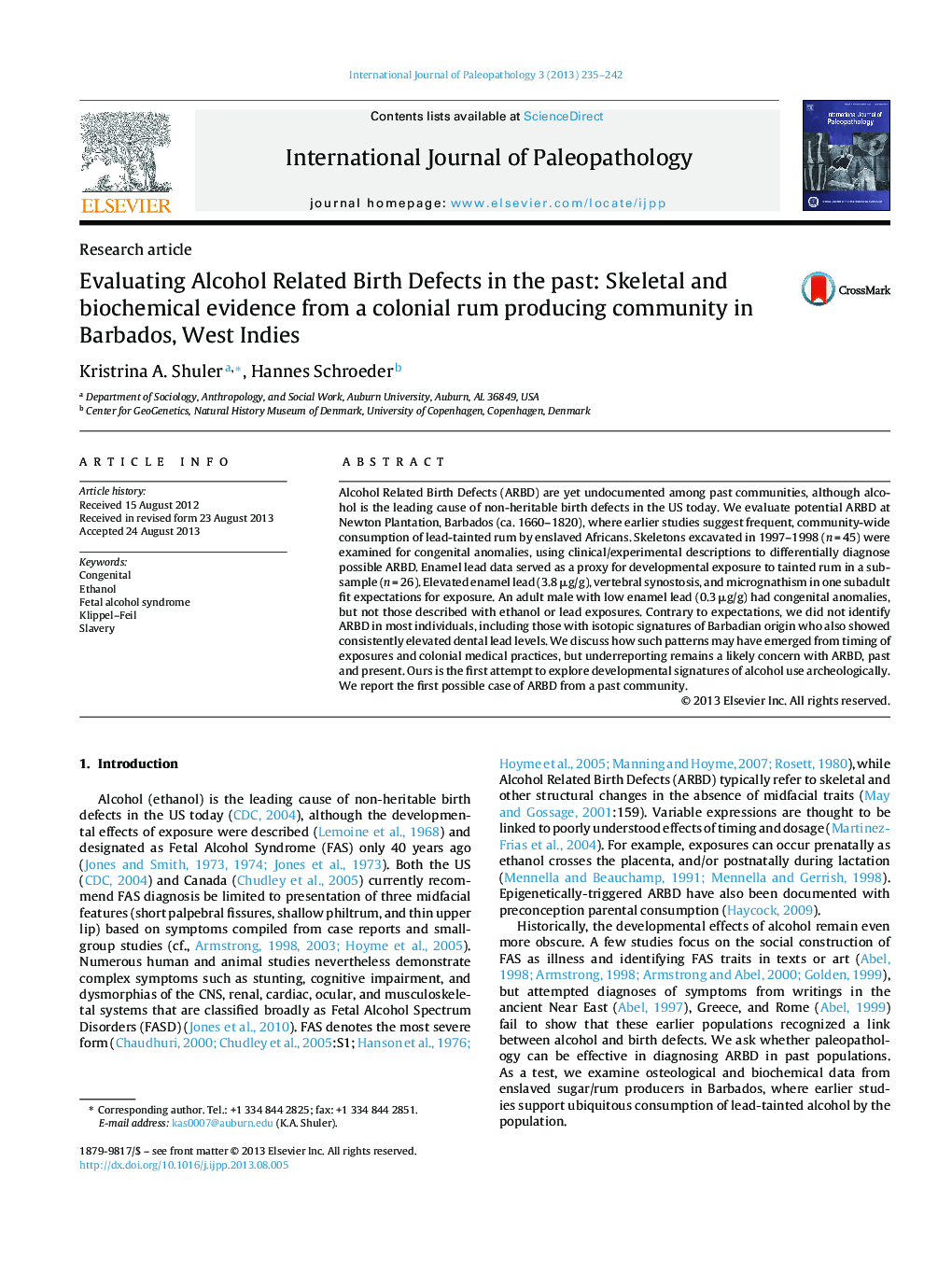| Article ID | Journal | Published Year | Pages | File Type |
|---|---|---|---|---|
| 101389 | International Journal of Paleopathology | 2013 | 8 Pages |
•We evaluate osteological evidence for Alcohol Related Birth Defects (ARBD).•Lead is used as a proxy for ARBD at Newton Plantation.•Congenital defects and enamel lead were high in only Barbadian born individuals.•One case appears to have been exposed to lead-tainted rum.•Paleopathology can reveal undocumented birth defects such as ARBD in the past.
Alcohol Related Birth Defects (ARBD) are yet undocumented among past communities, although alcohol is the leading cause of non-heritable birth defects in the US today. We evaluate potential ARBD at Newton Plantation, Barbados (ca. 1660–1820), where earlier studies suggest frequent, community-wide consumption of lead-tainted rum by enslaved Africans. Skeletons excavated in 1997–1998 (n = 45) were examined for congenital anomalies, using clinical/experimental descriptions to differentially diagnose possible ARBD. Enamel lead data served as a proxy for developmental exposure to tainted rum in a subsample (n = 26). Elevated enamel lead (3.8 μg/g), vertebral synostosis, and micrognathism in one subadult fit expectations for exposure. An adult male with low enamel lead (0.3 μg/g) had congenital anomalies, but not those described with ethanol or lead exposures. Contrary to expectations, we did not identify ARBD in most individuals, including those with isotopic signatures of Barbadian origin who also showed consistently elevated dental lead levels. We discuss how such patterns may have emerged from timing of exposures and colonial medical practices, but underreporting remains a likely concern with ARBD, past and present. Ours is the first attempt to explore developmental signatures of alcohol use archeologically. We report the first possible case of ARBD from a past community.
